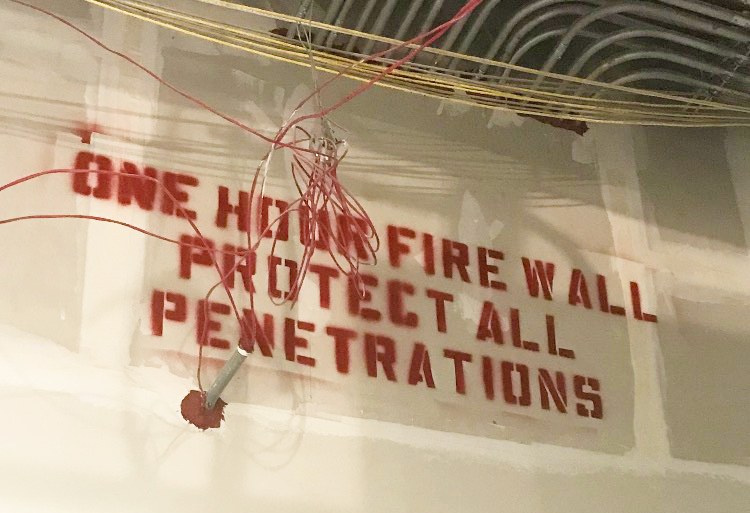Firestopping in the Building and Construction Industry

Firestopping is an integral component of a fire prevention plan during building construction intended to help restrict the spread of fire by containing it within a room or area of the building. The room typically will have fire-rated walls, ceiling and floor. Many walls and/or floors contain openings for mechanical, electrical, plumbing and sprinkler (MEPS) penetrations to allow pipes, ducts and cables to pass through. Firestopping materials are used to limit fire spread through penetrations in a fire barrier. Hilti Market Development Manager Stefan Juli says membrane penetrations are problematic because “if you have a fire, and smoke gets in a chase wall, smoke can easily go upward and actually spread through the building.”
The idea of compartmentation came about from the shipbuilding industry. Once boats, particularly warships, began to have different compartments connected with ventilation and cables, compartmentation became more necessary, especially considering the wooden structures.
“It’s not uncommon to see a fire barrier penetrated during a minor building alteration, and then the penetrating item isn't protected by firestopping,” says Chris Jelenewicz, technical director of Society of Fire Protection Engineers (SFPE). Many MEPS and other trade contractors’ services can leave holes in the barriers, some of which can be difficult to detect. If the penetration isn’t properly sealed and protected with an appropriate firestop system, the fire barrier is rendered less effective, and fire will spread beyond the compartment of origin.
Knowledge of proper firestopping material to use and proper installation techniques are vital to the system being effective. Chamberlin’s years of extensive expertise and hands-on experience have taught us a thing or two.
Subscribe Today!
Stay-in-the-know and subscribe to our blog today!